
 Home
Home
 Updater
Updater
 Me
Me
 Living
Living
 Sport
Sport
 Work
Work
 Contact
Contact
 Germar's Monthly Updater
Germar's Monthly Updater
|
Four-National-Parks-Tour
Day 9 and 10 On the ninth day of our journey, we got up early and had breakfast at a place where we could overlook the winding road leading to Kings Canyon.
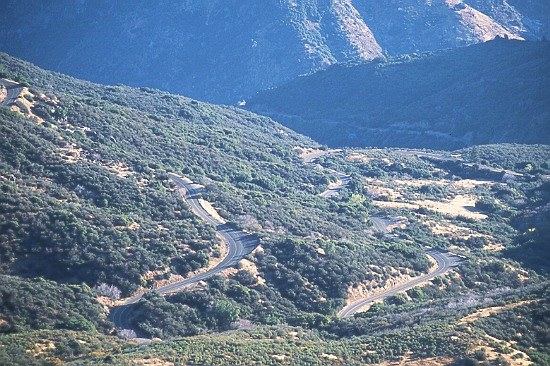
We did not drive all the way to the end of the canyon, but turned back to visit "Grant Grove", the last Sequoia grove of our journey . As the name suggests, the grove features the "General Grant Tree", named for the leader of Union forces during the Civil War. The tree has the greatest base diameter of any Sequoia: 12.3 meter. For some reason, it was proclaimed the "Nation's Christmas Tree" by President Calvin Coolidge, although it has no resemblance whatsoever with a typical Christmas tree. Below the giant trunks, chipmunks were speeding around, and did certainly not care of the honorable names that have been given to trees. Those will be forgotten anyway when the trees finally topple in 1000 years or so.
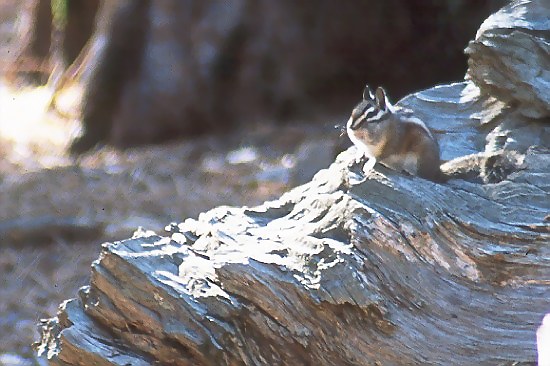
Eventually we left Sequoia and Kings Canyon National Park and drove via Fresno to Yosemite National Park. The park is famous for its granite rocks groud by glacial forces, enormous waterfalls, lush mountain meadows, mirroring lakes, solitude, and, in summer, traffic congestion created by 14,000 daily visitors. We first drove up to Glacier Point, a vantage point with the best views of Yosemite Valley, the Yosemite, Vernal, and Nevada water falls, and, last but not least, Half Dome. Geologists are still wondering where the second half of Half Dome might be. I have read opinions ranging between "there was never a second half" and "somewhere in the Pacific".
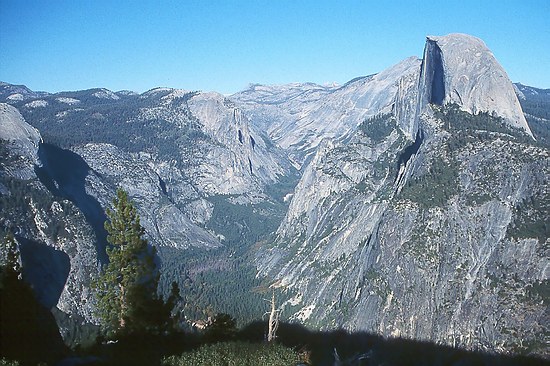
After enjoying the magnificent mountain scenery for one hour, we headed down towards Yosemite Valley. Shortly before reaching the valley, we had to drive through a tunnel, and behind the tunnel, we saw what has been called the most photographed vista on Earth: The granite monolith El Capitan to the left, Bridalveil Fall and Cathedral Rock to the right, and Half Dome in the background. We were a little bit late. Imagine this scenery during sunset!
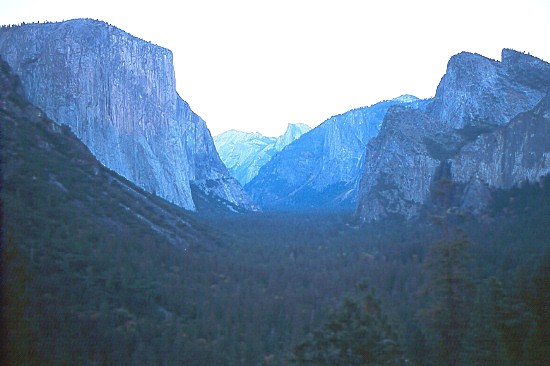
We drove to the end of the valley and stayed over night at Upper Pines campground. My camping guide claims that "people come from all over the world to camp here. Sometimes it appears as if they are from other worlds as well." Reservations several months in advance are necessary in the high-season. As it was November, we were lucky and still found a spot. On the next day, the tenth of our trip, we took advantage of the great location of our campsite and hiked from there to Mirror Lakes, located at the foot of Half Dome. During spring and summer, the lakes presumably provide an awesome reflection of Half Dome. There was no water at all when we were there. So you have to be satisfied with the reflection in a puddle of the parking lot:
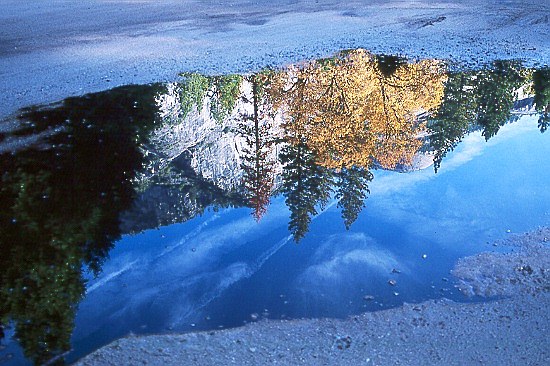
Further down the trail, we entered a forest, which reminded me of home. Trees were thickly cladded with mosses, the foliage was stained in the vivid colors of fall, ...
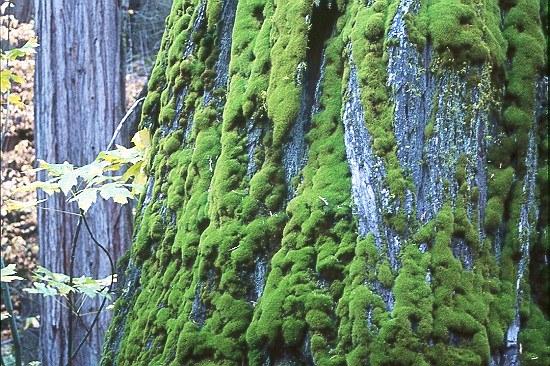
... and beautiful butterflies were still fluttering in the air.
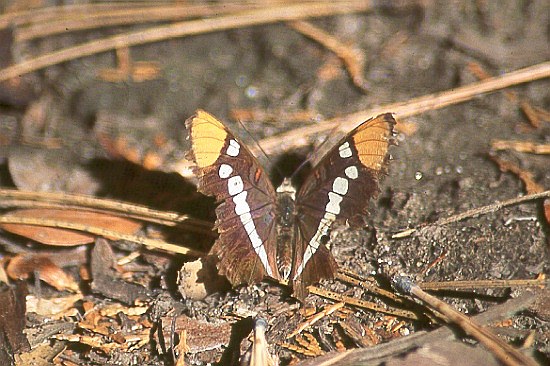
In the afternoon, we hiked up to the Vernal Fall. The trail is strenuous, as the steps are rather high, but me and my mom very much enjoyed the physical exercise while being surrounded by natural wonders.
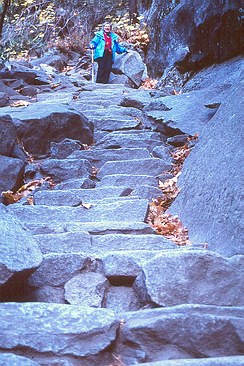
This is Vernal Fall. The whole wall is presumably covered by water during snowmelt. This will certainly look more spectacular than the rill in November. The priceless advantage of November is, however, that it's possible to climb to the top of the fall without getting completely soaked.
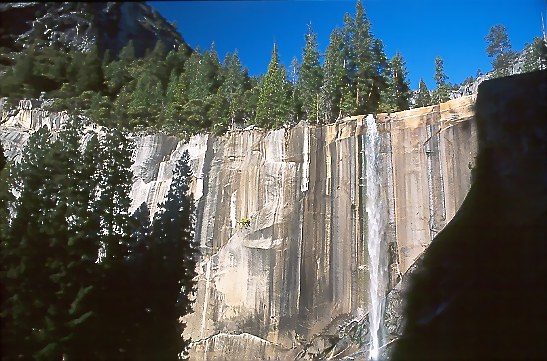
We walked back to our motor home and stayed for a second night at Upper Pines campground.
| |||||||
|
< Previous Day | Tour Map | Next Day > Return to: Updates from 2001 | Current Updater
Last updated: 23 January 2016
|
|||||||